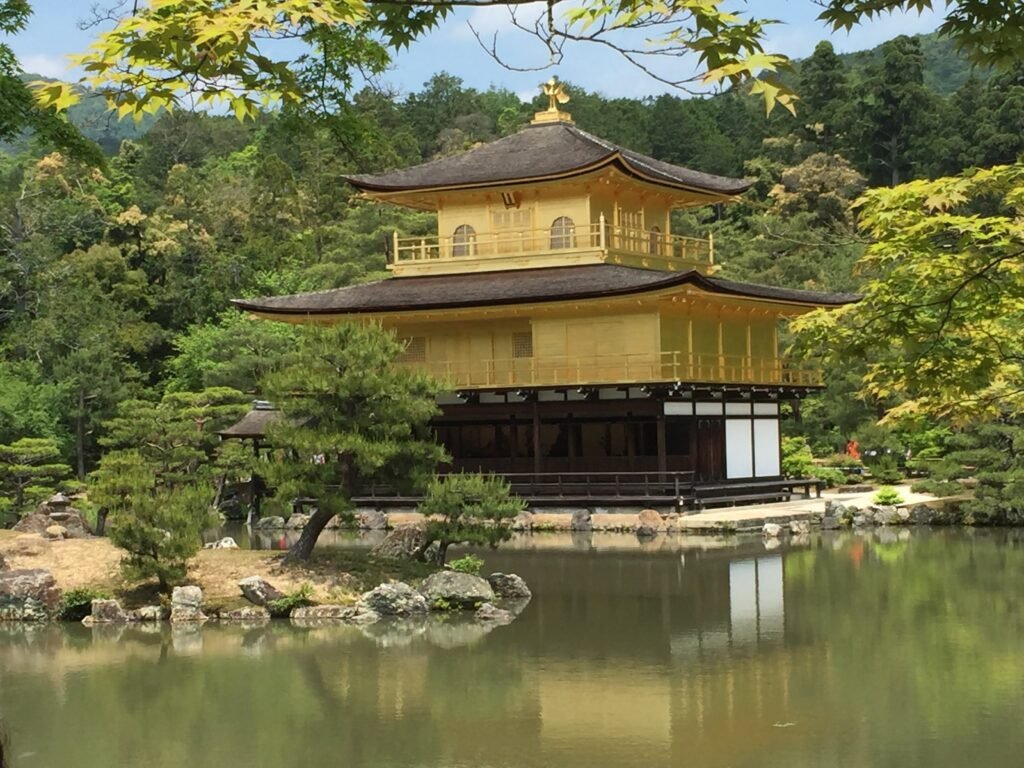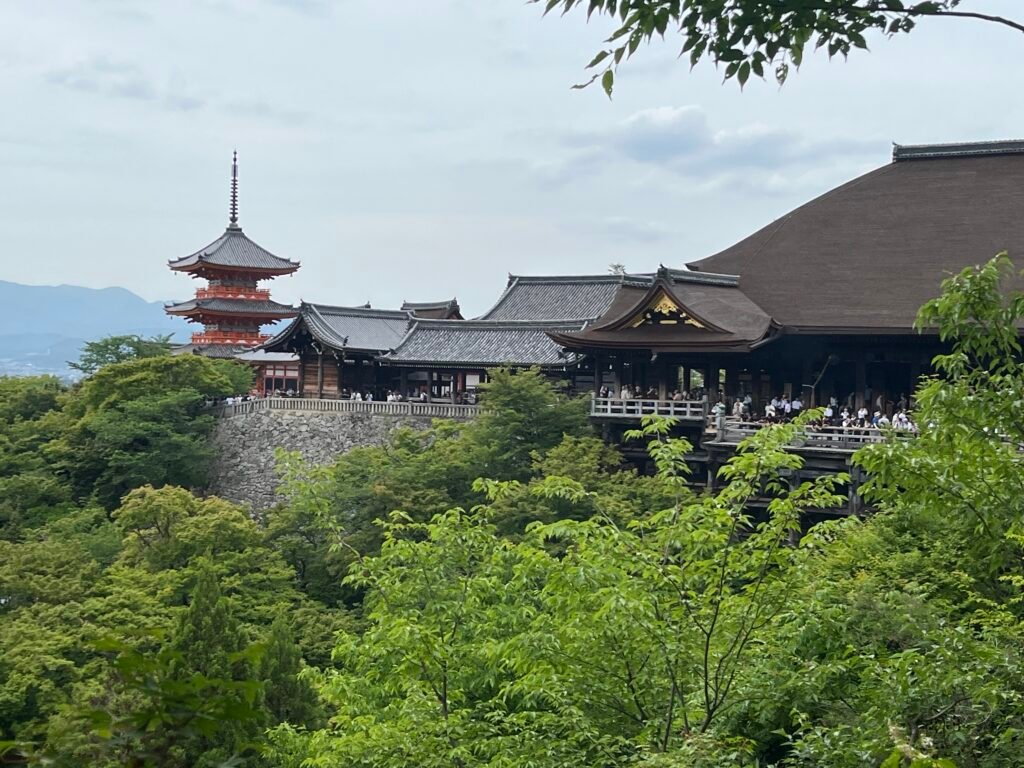
A Historical Overview of Kyoto
Kyoto, a city steeped in history and culture, was established as Japan’s capital in 794 AD, marking the beginning of the Heian period. This era is characterized by a flourishing of arts, literature, and governance that would shape the Japanese identity for centuries. As the imperial capital for over a millennium, Kyoto became the epicenter of political power, culture, and religion. The city was home to the imperial court, which attracted scholars, artists, and craftsmen, all contributing to its vibrant cultural landscape.
Throughout its history, Kyoto has witnessed significant events that have profoundly influenced its development. The city served as a key location for the emergence of various Japanese art forms, including tea ceremonies, ikebana (flower arranging), and traditional theater. Kyoto’s artisans and intellectuals created works that not only defined local aesthetics but also resonated throughout Japan, laying the groundwork for cultural practices that are celebrated today. The historical significance of Kyoto is further emphasized by its designation as a UNESCO World Heritage Site in 1994, a recognition that underscores the preservation of its numerous temples, shrines, and gardens.
Kyoto’s temples and gardens not only reflect the artistry and philosophies that emerged from the city but also serve as testament to its resilience over time. While it suffered damages during various conflicts, including the Onin War in the 15th century, the city eventually rebounded, maintaining its status as a cultural bastion. The intertwining of nature and architecture in these historical sites encapsulates the essence of Japanese aesthetics, characterized by simplicity and harmony. The enduring beauty and spirituality of Kyoto continue to inspire visitors and locals alike, solidifying its importance as a cultural and historical gem in Japan.
The Temples of Kyoto: A Spiritual Odyssey
Kyoto, the ancient capital of Japan, is renowned for its rich tapestry of temples that reflect the city’s profound spiritual heritage. Each temple has its own unique architectural style and historical significance, making them integral to understanding Kyoto’s culture. Among these sacred sites, Kinkaku-ji, Ginkaku-ji, and Ryoan-ji stand out as quintessential representations of Japanese artistry and spirituality.

Kinkaku-ji, also known as the Golden Pavilion, is perhaps one of the most iconic images of Kyoto. This Zen Buddhist temple is adorned with gold leaf and is surrounded by a tranquil pond that mirrors its stunning reflection, creating an ethereal atmosphere. Built in the 14th century as a retirement villa for Shogun Ashikaga Yoshimitsu, it later became a temple upon his death. Visitors to Kinkaku-ji often engage in meditation, reflecting on the harmony between nature and architecture, which is central to Zen philosophy.
In contrast, Ginkaku-ji, or the Silver Pavilion, exhibits a more understated elegance. Although it was never covered in silver, its minimalist design serves as a testament to the refined aesthetics of the Muromachi period. Established by Ashikaga Yoshimasa, this temple is a celebration of simplicity, and its surrounding gardens serve as an exquisite example of the shakkei principle, incorporating the surrounding landscape into the design. Both locals and tourists flock to Ginkaku-ji for introspection and to admire the meticulously curated gardens.
Ryoan-ji, famous for its rock garden, offers a different experience altogether. Built in the late 15th century, the temple’s gravel garden features carefully arranged rocks that encourage viewers to ponder the nature of existence and enlightenment. It serves as a serene space for contemplation, attracting those seeking spiritual nourishment. The rituals and festivals held at these temples further enrich their significance, illustrating the ongoing role they play in the spiritual lives of both residents and visitors.
The Serenity of Kyoto’s Gardens
Kyoto, a city renowned for its rich cultural heritage, boasts an array of serene gardens that not only reflect the artistic vision of Japanese landscape design but also embody the principles of harmony and tranquility inherent in Zen philosophy. These gardens serve as peaceful retreats, inviting visitors to momentarily escape the hustle and bustle of urban life and indulge in contemplation.
One notable example is the Nanzen-ji Temple garden, which exemplifies the aesthetic perfection of a Zen garden. Here, visitors can appreciate meticulously arranged stones, raked pebbles, and carefully placed flora that create a sense of calm and order. The garden’s design is intentionally minimalist, encouraging a meditative state by inviting individuals to focus on the simplicity and elegance of nature. The use of elements such as water, stone, and greenery not only provides visual appeal but also evokes deeper thoughts on the cyclical nature of life and death, a core tenet of Zen thought.
Another significant garden is the Philosopher’s Path, which meanders alongside a cherry-tree-lined canal. This picturesque pathway is enriched with cultural history as it was frequented by many philosophers and thinkers. Walking along the Philosopher’s Path offers a unique experience where one can be enveloped by the beauty of seasonal blooms, particularly during cherry blossom season. Along this route, sites such as the Ginkaku-ji Temple can also be explored, showcasing its stunning moss gardens designed to reflect serenity and balance.
Ultimately, Kyoto’s gardens are more than mere landscape features; they are profound spiritual spaces that embody the essence of Japanese culture. Each garden provides an opportunity for tranquility, allowing visitors to connect with nature in a deeply meaningful way. The harmonious blend of nature and spirituality in these serene environments invites reflection and renewal, reaffirming their significance in the fabric of Kyoto’s rich cultural tapestry.

Embracing Kyoto’s Cultural Legacy Today
Kyoto, a city known for its rich cultural heritage, has remarkably managed to preserve its traditions while adapting to the dynamic nature of modern society. Today, Kyoto stands as a living testament to dedicated efforts in maintaining the essence of its illustrious past through ongoing traditions and the preservation of its numerous temples and gardens. Each year, visitors are enticed by the stunning architecture and serene landscapes that narrate historical tales, ensuring that the cultural legacy remains intact.
The city’s temples, like Kinkaku-ji and Kiyomizu-dera, receive regular conservation efforts to uphold their structural integrity as well as their historical significance. These efforts are not merely about preservation; they also involve teaching the next generation about the architecture, art, and philosophies that define Kyoto’s identity. Such initiatives are crucial in a rapidly changing world, where the depth of history can easily be overshadowed by contemporary advancements.

In addition to conservation, the rhythm of Kyoto’s cultural life is sustained through vibrant festivals that celebrate the seasons and the community’s ancestral spirits. Events like Gion Matsuri and Aoi Matsuri attract large crowds, both locals and tourists alike, engaging them in the intricate customs that symbolize Kyoto’s identity. This communal spirit serves to not only honor traditions but also reinforces social ties, enriching the city’s cultural tapestry.
Furthermore, artisanal crafts such as Kyo-yaki pottery and textiles like Nishijin-weaving are continuously nurtured through craftsmanship programs and workshops. Culinary experiences, too, play a vital role in embracing Kyoto’s legacy, with traditional kaiseki meals showcasing seasonal ingredients and the artistry of presentation. These practices invite both tourists and locals to partake in a cultural experience that is deeply rooted in Kyoto’s historical context.
Overall, Kyoto’s juxtaposition of modernity and tradition creates a unique environment where everyone can appreciate the beauty of its cultural depth. By engaging with the city’s heritage through its festivals, crafts, and culinary experiences, visitors are given the opportunity to cherish and understand the timeless essence that is Kyoto.
